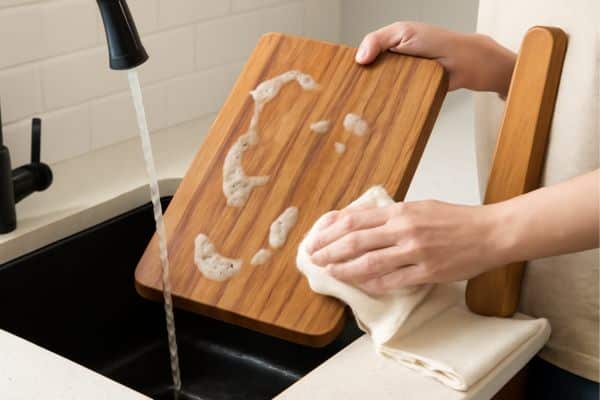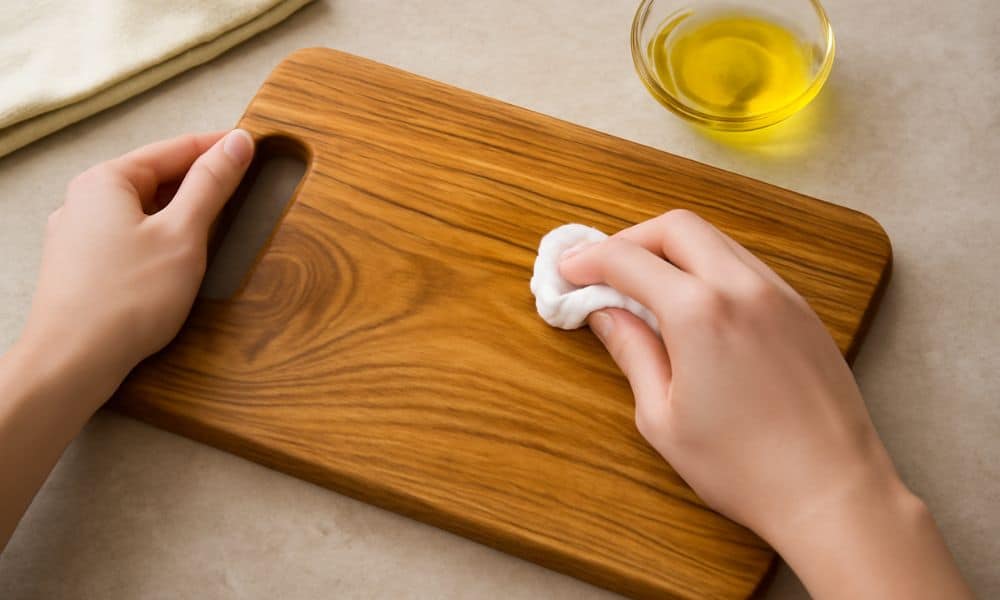There’s something special about a wooden cutting board. Mine is teak. It has stayed with me through quick meals and big weekend feasts. I bought it because it looked good and felt strong. Now, it’s the most-used thing in my kitchen. Many people ask how to care for teak cutting board surfaces. The good news? It’s easy. A teak board is not just strong—it lasts. It has oils that keep water out. It doesn’t crack or wear out fast. In this guide, I’ll show you how to make yours last.
Why Teak is a Great Wood for Cutting Boards
Is teak good for cutting boards? Yes, and here’s why it stands above the rest.
Teak is strong, steady, and smart. It has a natural way of protecting itself. The wood is rich in oils, so it resists water on its own. That means fewer cracks, less swelling, and a longer life.
I’ve used bamboo, maple, and even acacia. Bamboo feels light but dries out fast. Maple is smooth but soaks up water. Acacia looks fancy, but scratches more. Teak? It just works. Every time.
Teak has a tight grain. That means food bits don’t get stuck. The surface stays smooth with less care. It’s solid, yet gentle on knives. You don’t need to baby it—just treat it with respect.
Daily Wooden Cutting Board Treatment Made Easy

Here’s what I do after every use. It takes less than a minute but keeps my teak board strong and clean.
- Wash with warm, soapy water
Use a soft sponge or cloth. No harsh scrubbing needed. Just a gentle wipe does the job. - Dry it right away
Grab a towel and pat the board dry. Then stand it upright. This stops water from sinking in. - Never soak or use a dishwasher
Teak is tough, but water over time causes warping. Heat breaks it down fast. Always keep it dry and cool.
How to Oil a Wood Cutting Board (The Right Way)
Wondering how to oil a wood cutting board? Here’s the simple process I use every month. I oil my teak board every 2 to 4 weeks. It keeps the surface smooth and blocks moisture from sinking in. If you’re also into BBQ, check out the best cutting board for brisket—perfect for juicy, tender slices.
What You’ll Need:
- Food-grade mineral oil
- A clean, lint-free cloth
- A dry, clean board
Easy Step-by-Step:
1. Clean the board and let it dry.
2. Apply oil in small circles using your cloth.
3. Let it sit for a few hours (overnight is best).
4. Wipe off any extra oil before storing.
Extra Tips for Long-Lasting Teak Boards

Want your board to last for years? These tips come straight from my kitchen.
Rotate your board often. I flip mine from side to side to spread out the wear. It helps keep the surface flat and even.
Keep it away from heat. I learned the hard way that sun and stove heat can dry out the wood. Cracks start small but grow fast.
Go easy with heavy cleavers. A teak board can handle a lot, but hard chops in one spot can leave marks. Use gentle pressure. Let the knife do the work.
Use a second board for raw meat. It’s safer and helps your teak board stay fresh. I keep a plastic one nearby for chicken or fish.
Choosing the Right Teak Cutting Board for Your Kitchen
Not all boards are the same. I’ve tried many styles and found each has its place.
Thick boards work best for heavy chopping. I use mine for big veggies and meats. It stays steady and handles pressure well.
Medium boards are great for daily prep. Slicing fruit, cutting bread, or dicing onions — this size fits most needs without taking much space.
Serving boards are lighter and look nice on the table. I pull one out for cheese, snacks, or a simple toast spread.
Common Mistakes and How to Avoid Them

Even strong boards like teak need the right care. A few small mistakes can shorten their life.
Don’t over-oil. A little oil goes a long way. Too much makes the surface sticky and hard to clean. One thin coat is enough.
Avoid bleach and harsh soap. These break down the wood and strip its natural oils. I always use mild dish soap and warm water.
Fix cracks and dry spots early. A dry board feels rough and dull. I add a light oil coat as soon as it looks thirsty. It brings the wood back to life.
Conclusion
A teak cutting board is more than a kitchen tool. It’s a partner in every meal. With its strength, beauty, and natural oils, it’s built to last.
The best part? It only takes a few simple steps to keep it that way. Wash, dry, oil, and store it with care. That’s it.
A little love goes a long way. Your board will stay smooth, strong, and ready for whatever you cook next.


